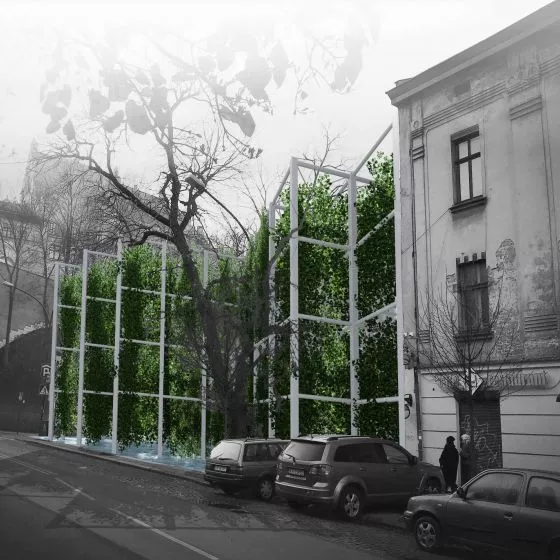A team of architecture students from the Cracow University of Technology, during their internship at the "Wizja" studio under the supervision of Stanislaw Deńko, developed a concept for a metropolitan city.
The project envisages changing Krakow's urban planning into a polycentric compact city, by creating satellite centers around the Old Town.
merging neighborhoods
Based on the assumptions of a polycentric city, architect Stanislaw Deńko proposed the modernization of Nowa Huta (currently serving as the city's bedroom) and the creation of a new center in the Rybitwy and Bieżanow areas. Connecting these two areas by creating a new north-south axis, which is an extension of the Rose Avenue axis, became the main theme of the project on which the interns worked.
Nowa Huta - Biezanow axis
© Stanislaw Deńko, interns: Magdalena Sznajder,
Katarzyna Mierzwińska, Mateusz Wieczorek, Wojtek Zakrzewski
composition axes
The students, after performing a site inspection, selected the main compositional axes on which the project is based. The most important elements became the Vistula River with its embankments, the Nowa Huta axis and the greenery of the Mogilskie and Łęgowski Forests. They were assigned main and collector roads and infrastructure - streetcar lines, monorail, agglomeration railroad and PRT (Personal Rapid Transit).
urban greenery
The proposed low green belt connected the Nowohuckie Meadows in the form of a natural meadow with the areas around the Biezanow sewage treatment plant. The interns also designed canals introducing water directly into the city space. The green areas were extended by ecological corridors running east-west, helping to aerate the city.
new development
The students supplemented the existing development of Nowa Huta and the areas of the Łęg thermal power plant and Bieżanów sewage treatment plant with new buildings. In their project, Nowa Huta was modernized and Biezanow gained a new center located on the sites of today's unused railroad sidings. The areas adjacent to the roads were filled with high-intensity, mixed-use development, and the rest with residential development.
Vistula River recreation zone
© Stanislaw Deńko, interns: Magdalena Sznajder,
Katarzyna Mierzwińska, Mateusz Wieczorek, Wojtek Zakrzewski
vistula boulevards
The designers paid special attention to the Vistula boulevards area, connecting the north bank of the Vistula River with the south bank by two footbridges. They also introduced two areas for active and passive recreation. They include running tracks, courts, sports fields, eagles or a canoe channel, as well as spaces for cultural events, an amphitheater and a city beach.
By raising the paths and footbridges above ground level, the students avoided excessive interference with the natural riparian area.
The project by Stanislaw Denieka, which was worked on by a group of students consisting of: Magdalena Sznajder, Katarzyna Mierzwińska, Mateusz Wieczorek and Wojtek Zakrzewski, shows that in addition to building more developer housing estates on the outskirts of Krakow, there are other possibilities involving, developing, organizing and connecting existing neighborhoods.
The work was presented at the International Architecture Biennale Krakow 2019.
compiled by {tag:AuthorAiB}
illustrations courtesy of Stanislaw Deńka, Magdalena Sznajder,
Katarzyna Mierzwińska, Mateusz Wieczorek and Wojtek Zakrzewski



























